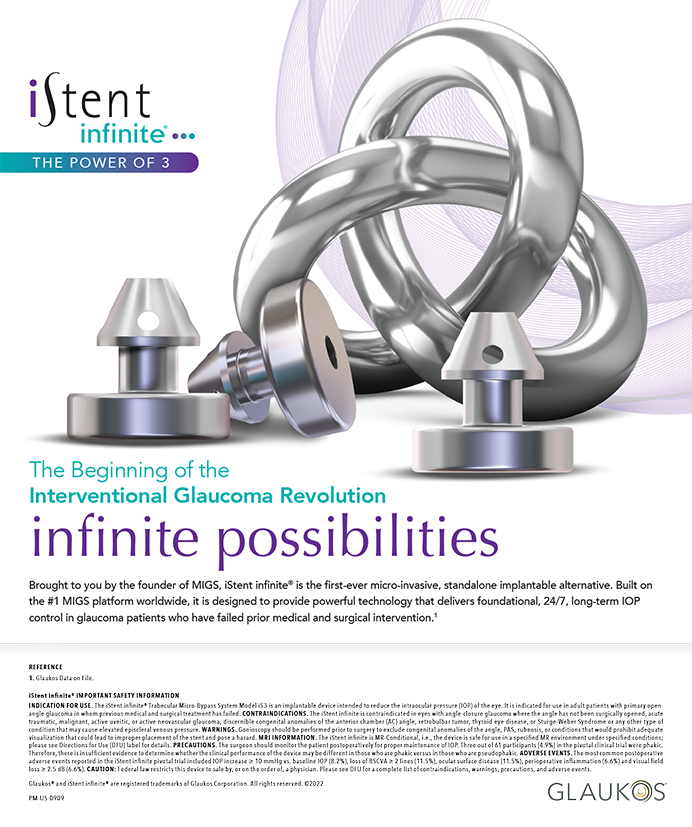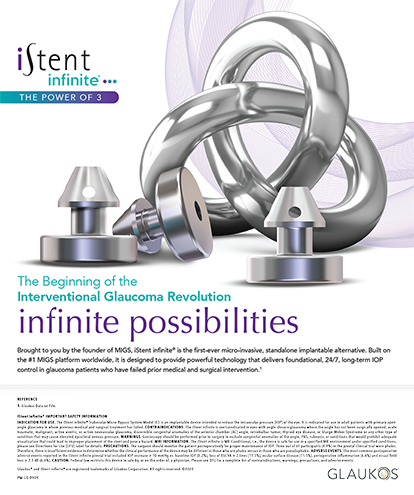Refractive Surgery | Mar 2006
Microstriae
A new technique in preventing this condition in highly myopic LASIK treatments is presented.
Richard Maw, MD
Microstriae are very faint, small, disorganized, superficial wrinkles in the LASIK flap. Unlike macrostriae, which result from the flap's slippage, microstriae are produced by the mechanical forces of a LASIK flap (with unchanged convexity) overlying a newly contoured flap bed (with less convexity). The unchanged arc length of the flap must therefore fit into the shorter arc length of the flap's bed. This disparity in shapes causes microstriae.
Microstriae can be a frustrating outcome in patients who undergo an otherwise perfect LASIK surgery. This effect is more common in high myopes, probably because more tissue is removed and there is an exaggerated disparity between the flap and its bed in regard to fit. Also, and unfortunately in some cases, the microstriae can have an unwelcome and detrimental effect on vision.
During the last year, in an effort to prevent microstriae from forming, I have been stretching the flaps of high myopes at the end of their LASIK procedures. I have observed a dramatic decrease in the frequency and severity of microstriae in these patients.
MY TECHNIQUE
I irrigate and reposition the flap in my usual manner. Then, I gently stroke a dry cellulose spear over the flap's entire surface, starting at the hinge and moving across the whole flap. This process squeegees fluid from the interface. It takes just a couple of seconds, but it releases the majority of fluid from underneath the flap.
The egress of fluid from the interface helps the flap's stromal undersurface to adhere to the bed's stromal surface. This dried stromal tissue is naturally very adherent to itself.
Second, I use a dry sponge spear to further massage the flap's surface. Now, I massage from the center of the flap toward its periphery. The goal is to expel any remaining fluid from the flap's interface. During this stage, I can feel the flap sticking down and becoming less movable to more aggressive manipulation with the sponge. It is possible to cause striae to form during this step, but they will disappear with continued massaging. This step takes about 15 to 20 seconds.
Finally, I use a cyclodialysis spatula to stretch the flap in all directions. Again, I start from the center of the flap and move toward the periphery. During this step, the dry metal of the cyclodialysis spatula forms a tight grip on the flap's dried epithelial surface, which allows very aggressive stretching. Moreover, because no fluid is present in the interface, the strong, adherent properties of the stromal interface hold the flap in a stretched manner such that microstriae do not form, even in high myopes. Stretching during this step lasts about 10 to 20 seconds.
CONCLUSION
I believe the dried stroma's adherence to itself is why the technique I have described so effectively prevents microstriae. Traditionally, we hear that the endothelial pump creates suction, which holds the flap in place. However, I believe the force of the endothelial pump is minor in comparison to the natural, adherent properties of the stromal interface after fluid has been removed. Consequently, with this technique, the adherent force of the stromal interface trumps the forces that cause microstriae to develop.
In my hands, the entire drying and stretching process takes approximately 30 to 40 seconds. Most importantly, with minimal extra time or effort, the technique has dramatically decreased my incidence of microstriae, even in highly myopic patients.
Richard Maw, MD, is a board-certified ophthalmologist and refractive surgeon in Las Vegas. Dr. Maw may be reached at (702) 228-4554; richardmaw@hotmail.com.


